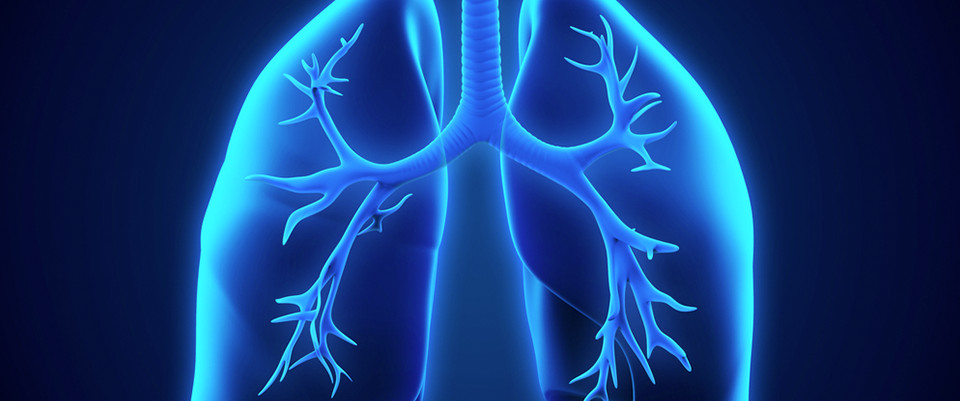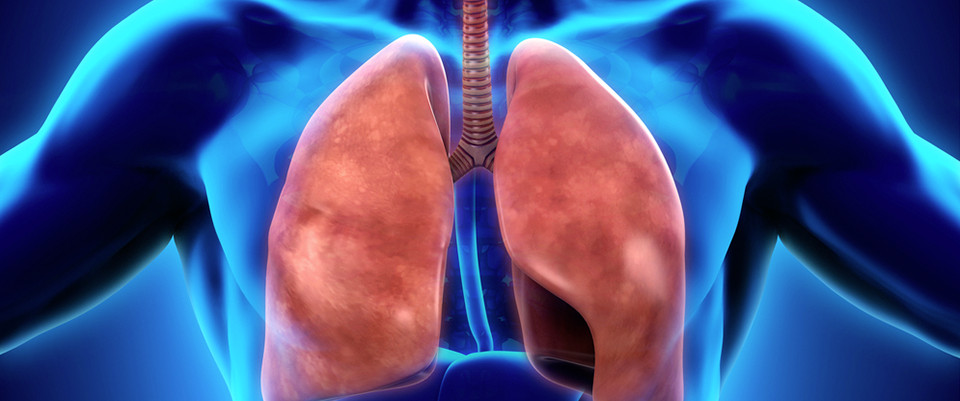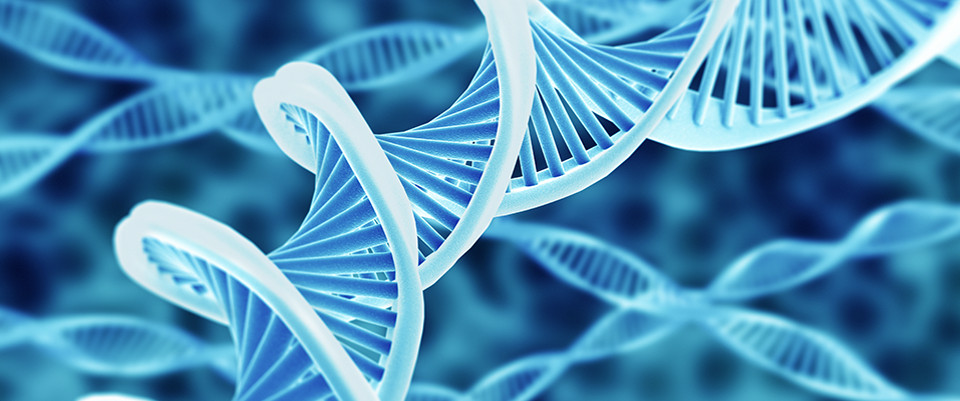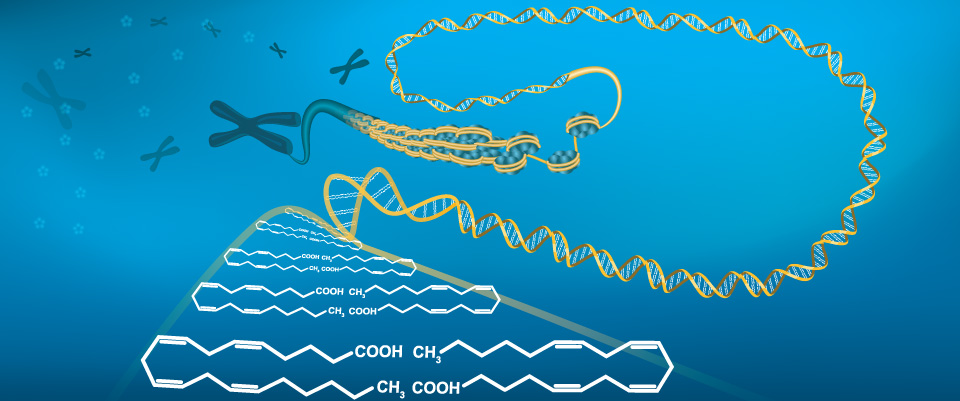PubMed
Linking diet to acne metabolomics, inflammation, and comedogenesis: an update.
Related Articles
Linking diet to acne metabolomics, inflammation, and comedogenesis: an update.
Clin Cosmet Investig Dermatol. 2015;8:371-88
Authors: Melnik BC
Abstract
Acne vulgaris, an epidemic inflammatory skin disease of adolescence, is closely related to Western diet. Three major food classes that promote acne are: 1) hyperglycemic carbohydrates, 2) milk and dairy products, 3) saturated fats including trans-fats and deficient ω-3 polyunsaturated fatty acids (PUFAs). Diet-induced insulin/insulin-like growth factor (IGF-1)-signaling is superimposed on elevated IGF-1 levels during puberty, thereby unmasking the impact of aberrant nutrigenomics on sebaceous gland homeostasis. Western diet provides abundant branched-chain amino acids (BCAAs), glutamine, and palmitic acid. Insulin and IGF-1 suppress the activity of the metabolic transcription factor forkhead box O1 (FoxO1). Insulin, IGF-1, BCAAs, glutamine, and palmitate activate the nutrient-sensitive kinase mechanistic target of rapamycin complex 1 (mTORC1), the key regulator of anabolism and lipogenesis. FoxO1 is a negative coregulator of androgen receptor, peroxisome proliferator-activated receptor-γ (PPARγ), liver X receptor-α, and sterol response element binding protein-1c (SREBP-1c), crucial transcription factors of sebaceous lipogenesis. mTORC1 stimulates the expression of PPARγ and SREBP-1c, promoting sebum production. SREBP-1c upregulates stearoyl-CoA- and Δ6-desaturase, enhancing the proportion of monounsaturated fatty acids in sebum triglycerides. Diet-mediated aberrations in sebum quantity (hyperseborrhea) and composition (dysseborrhea) promote Propionibacterium acnes overgrowth and biofilm formation with overexpression of the virulence factor triglyceride lipase increasing follicular levels of free palmitate and oleate. Free palmitate functions as a "danger signal," stimulating toll-like receptor-2-mediated inflammasome activation with interleukin-1β release, Th17 differentiation, and interleukin-17-mediated keratinocyte proliferation. Oleate stimulates P. acnes adhesion, keratinocyte proliferation, and comedogenesis via interleukin-1α release. Thus, diet-induced metabolomic alterations promote the visible sebofollicular inflammasomopathy acne vulgaris. Nutrition therapy of acne has to increase FoxO1 and to attenuate mTORC1/SREBP-1c signaling. Patients should balance total calorie uptake and restrict refined carbohydrates, milk, dairy protein supplements, saturated fats, and trans-fats. A paleolithic-like diet enriched in vegetables and fish is recommended. Plant-derived mTORC1 inhibitors and ω-3-PUFAs are promising dietary supplements supporting nutrition therapy of acne vulgaris.
PMID: 26203267 [PubMed]
Metabolomics Reveals a Key Role for Fumarate in Mediating the Effects of NADPH Oxidase 4 in Diabetic Kidney Disease.
Related Articles
Metabolomics Reveals a Key Role for Fumarate in Mediating the Effects of NADPH Oxidase 4 in Diabetic Kidney Disease.
J Am Soc Nephrol. 2015 Jul 22;
Authors: You YH, Quach T, Saito R, Pham J, Sharma K
Abstract
The NADPH oxidase (NOX) isoform NOX4 has been linked with diabetic kidney disease (DKD). However, a mechanistic understanding of the downstream effects of NOX4 remains to be established. We report that podocyte-specific induction of NOX4 in vivo was sufficient to recapitulate the characteristic glomerular changes noted with DKD, including glomerular hypertrophy, mesangial matrix accumulation, glomerular basement membrane thickening, albuminuria, and podocyte dropout. Intervention with a NOX1/NOX4 inhibitor reduced albuminuria, glomerular hypertrophy, and mesangial matrix accumulation in the F1 Akita model of DKD. Metabolomic analyses from these mouse studies revealed that tricarboxylic acid (TCA) cycle-related urinary metabolites were increased in DKD, but fumarate levels were uniquely reduced by the NOX1/NOX4 inhibitor. Expression of fumarate hydratase (FH), which regulates urine fumarate accumulation, was reduced in the diabetic kidney (in mouse and human tissue), and administration of the NOX1/NOX4 inhibitor increased glomerular FH levels in diabetic mice. Induction of Nox4 in vitro and in the podocyte-specific NOX4 transgenic mouse led to reduced FH levels. In vitro, fumarate stimulated endoplasmic reticulum stress, matrix gene expression, and expression of hypoxia-inducible factor-1α (HIF-1α) and TGF-β. Similar upregulation of renal HIF-1α and TGF-β expression was observed in NOX4 transgenic mice and diabetic mice and was attenuated by NOX1/NOX4 inhibition in diabetic mice. In conclusion, NOX4 is a major mediator of diabetes-associated glomerular dysfunction through targeting of renal FH, which increases fumarate levels. Fumarate is therefore a key link connecting metabolic pathways to DKD pathogenesis, and measuring urinary fumarate levels may have application for monitoring renal NOX4 activity.
PMID: 26203118 [PubMed - as supplied by publisher]
Capillary electrophoresis reveals polyamine metabolism modulation in Leishmania (Leishmania) amazonensis wild type and arginase knockout mutants under arginine starvation.
Related Articles
Capillary electrophoresis reveals polyamine metabolism modulation in Leishmania (Leishmania) amazonensis wild type and arginase knockout mutants under arginine starvation.
Electrophoresis. 2015 Jul 23;
Authors: Castilho-Martins EA, Canuto GA, Muxel SM, da Silva MF, Floeter-Winter LM, Del Aguila C, López-Gonzálvez Á, Barbas C
Abstract
L-arginine is an essential amino acid in Leishmania (Leishmania) amazonensis metabolism. A key enzyme for parasite L-arginine metabolism is arginase (ARG) that uses arginine to produce urea and ornithine, a precursor of polyamine pathway guaranteeing parasite replication in both insect and mammal hosts. There is an alternative pathway to produce ornithine via L-proline and glutamate, but this mechanism is not described in Leishmania. In the mammal host, two enzymes can use L-arginine as substrate, the host ARG and the induced nitric oxide synthase (iNOS) that produces nitric oxide (NO). The competition between iNOS and both parasite and host ARG can favor the success of the infection or its control. Here, we established the metabolomic profile of the polyamine pathway of wild type (WT) L. (L.) amazonensis, submitted or not to L-arginine starvation, and compared to the ARG knockout mutant (arg(-) ). Our results indicated that arginine starvation induces a decrease in arginine, ornithine and putrescine, but we could not detect significative level changes of spermidine, spermidine or agmatine. However, the absence of ARG on the arg- mutant induced an increase of arginine and citrulline levels, but decreased the levels of ornithine and putrescine. Similarly to the WT arginine-starved parasites, the arg-parasites presented lower levels of proline when compared to the WT. This could be indicative of an alternative pathway to surpass the enzyme or its substrate absence. This article is protected by copyright. All rights reserved.
PMID: 26202519 [PubMed - as supplied by publisher]
Nutritional systems biology of type 2 diabetes.
Related Articles
Nutritional systems biology of type 2 diabetes.
Genes Nutr. 2015 Sep;10(5):481
Authors: Zhao Y, Barrere-Cain RE, Yang X
Abstract
Type 2 diabetes (T2D) has become an increasingly challenging health burden due to its high morbidity, mortality, and heightened prevalence worldwide. Although dietary and nutritional imbalances have long been recognized as key risk factors for T2D, the underlying mechanisms remain unclear. The advent of nutritional systems biology, a field that aims to elucidate the interactions between dietary nutrients and endogenous molecular entities in disease-related tissues, offers unique opportunities to unravel the complex mechanisms underlying the health-modifying capacities of nutritional molecules. The recent revolutionary advances in omics technologies have particularly empowered this incipient field. In this review, we discuss the applications of multi-omics approaches toward a systems-level understanding of how dietary patterns and particular nutrients modulate the risk of T2D. We focus on nutritional studies utilizing transcriptomics, epigenomomics, proteomics, metabolomics, and microbiomics, and integration of diverse omics technologies. We also summarize the potential molecular mechanisms through which nutritional imbalances contribute to T2D pathogenesis based on these studies. Finally, we discuss the remaining challenges of nutritional systems biology and how the field can be optimized to further our understanding of T2D and guide disease management via nutritional interventions.
PMID: 26202330 [PubMed]
The Role of Metabolomics in Brain Metabolism Research.
Related Articles
The Role of Metabolomics in Brain Metabolism Research.
J Neuroimmune Pharmacol. 2015 Jul 23;
Authors: Ivanisevic J, Siuzdak G
Abstract
This special edition of the Journal of Neuroimmune Pharmacology focuses on the leading edge of metabolomics in brain metabolism research. The topics covered include a metabolomic field overview and the challenges in neuroscience metabolomics. The workflow and utility of different analytical platforms to profile complex biological matrices that include biofluids, brain tissue and cells, are shown in several case studies. These studies demonstrate how global and targeted metabolite profiling can be applied to distinguish disease stages and to understand the effects of drug action on the central nervous system (CNS). Finally, we discuss the importance of metabolomics to advance the understanding of brain function that includes ligand-receptor interactions and new insights into the mechanisms of CNS disorders.
PMID: 26201839 [PubMed - as supplied by publisher]
Pyridoxine supplementation does not alter in vivo kinetics of one-carbon metabolism but modifies patterns of one-carbon and tryptophan metabolites in vitamin B-6-insufficient oral contraceptive users.
Related Articles
Pyridoxine supplementation does not alter in vivo kinetics of one-carbon metabolism but modifies patterns of one-carbon and tryptophan metabolites in vitamin B-6-insufficient oral contraceptive users.
Am J Clin Nutr. 2015 Jul 22;
Authors: Rios-Avila L, Coats B, Ralat M, Chi YY, Midttun Ø, Ueland PM, Stacpoole PW, Gregory JF
Abstract
BACKGROUND: Low chronic vitamin B-6 status can occur in a subset of women who use oral contraceptives (OCs) with uncertain metabolic consequences. An insufficiency of cellular pyridoxal 5'-phosphate (PLP), which is the coenzyme form of vitamin B-6, may impair many metabolic processes including one-carbon and tryptophan metabolism.
OBJECTIVE: We investigated the effects of vitamin B-6 supplementation on the in vivo kinetics of one-carbon metabolism and the concentration of one-carbon and tryptophan metabolites in vitamin B-6-deficient OC users.
DESIGN: A primed, constant infusion of [(13)C5]methionine, [3-(13)C]serine, and [(2)H3]leucine was performed on 10 OC users (20-40 y old; plasma PLP concentrations <30 nmol/L) before and after 28 d of supplementation with 10 mg pyridoxine hydrochloric acid/d. In vivo fluxes of total homocysteine remethylation, the remethylation of homocysteine from serine, and rates of homocysteine and cystathionine production were assessed. Targeted metabolite profiling was performed, and data were analyzed by using orthogonal partial least-squares-discriminant analysis and paired t tests adjusted for multiple testing.
RESULTS: Pyridoxine supplementation increased the mean ± SD plasma PLP concentration from 25.8 ± 3.6 to 143 ± 58 nmol/L (P < 0.001) and decreased the leucine concentration from 103 ± 17 to 90 ± 20 nmol/L (P = 0.007) and glycine concentration from 317 ± 63 to 267 ± 58 nmol/L (P = 0.03). Supplementation did not affect in vivo rates of homocysteine remethylation or the appearance of homocysteine and cystathionine. A multivariate analysis showed a clear overall effect on metabolite profiles resulting from supplementation. Leucine, glycine, choline, cysteine, glutathione, trimethylamine N-oxide, and the ratios glycine:serine, 3-hydroxykynurenine:kynurenine, 3-hydroxykynurenine:3-hydroxyanthranilic acid, and 3-hydroxykynurenine:anthranilic acid were significant discriminating variables.
CONCLUSIONS: Consistent with previous vitamin B-6-restriction studies, fluxes of one-carbon metabolic processes exhibited little or no change after supplementation in low-vitamin B-6 subjects. In contrast, changes in the metabolic profiles after supplementation indicated perturbations in metabolism, suggesting functional vitamin B-6 deficiency. This study was registered at clinicaltrials.gov as NCT01128244.
PMID: 26201817 [PubMed - as supplied by publisher]
Metaproteomics and metabolomics analyses of chronically petroleum-polluted sites reveal the importance of general anaerobic processes uncoupled with degradation.
Related Articles
Metaproteomics and metabolomics analyses of chronically petroleum-polluted sites reveal the importance of general anaerobic processes uncoupled with degradation.
Proteomics. 2015 Jul 23;
Authors: Bargiela R, Herbst FA, Martínez-Martínez M, Seifert J, Rojo D, Cappello S, Genovese M, Crisafi F, Denaro R, Chernikova TN, Barbas C, von Bergen M, Yakimov MM, Ferrer M, Golyshin PN
Abstract
Crude oil is one of the most important natural assets for humankind, yet it is a major environmental pollutant, notably in marine environments. One of the largest crude oil polluted areas in the word is the semi-enclosed Mediterranean Sea, in which the metabolic potential of indigenous microbial populations towards the large-scale chronic pollution is yet to be defined, particularly in anaerobic and micro-aerophilic sites. Here, we provide an insight into the microbial metabolism in sediments from three chronically polluted marine sites along the coastline of Italy: the Priolo oil terminal/refinery site (near Siracuse, Sicily), harbour of Messina (Sicily) and shipwreck of MT Haven (near Genoa). Using shotgun metaproteomics and community metabolomics approaches, the presence of 651 microbial proteins and 4,776 metabolite mass features have been detected in these three environments, revealing a high metabolic heterogeneity between the investigated sites. The proteomes displayed the prevalence of anaerobic metabolisms that were not directly related with petroleum biodegradation, indicating that in the absence of oxygen, biodegradation is significantly suppressed. This suppression was also suggested by examining the metabolome patterns. The proteome analysis further highlighted the metabolic coupling between methylotrophs and sulphate reducers in oxygen-depleted petroleum-polluted sediments. This article is protected by copyright. All rights reserved.
PMID: 26201687 [PubMed - as supplied by publisher]
Metabolomics analysis of saliva from patients with primary Sjögren's syndrome.
Related Articles
Metabolomics analysis of saliva from patients with primary Sjögren's syndrome.
Clin Exp Immunol. 2015 Jul 21;
Authors: Kageyama G, Saegusa J, Irino Y, Tanaka S, Tsuda K, Takahashi S, Sendo S, Morinobu A
Abstract
INTRODUCTION: The recent development of salivary proteomics has led to the identification of potential biomarkers for diagnosing patients with primary Sjögren's syndrome (pSS). Here we sought to identify differentially produced salivary metabolites from pSS patients and healthy controls (HCs) that might be used to characterize this disease.
METHODS: We obtained salivary samples from 12 female pSS patients (mean age 44.2 ± 13.01) and 21 age-matched female HCs. The metabolite profiles of saliva were analyzed by gas chromatography-mass spectrometry. The total metabolite levels in each of the samples were calculated and compared across the study participants.
RESULTS: A total of 88 metabolites were detected across the study samples, 41 of which were observed at reduced levels in the samples from pSS patients. Principal component analysis (PCA) revealed a loss in salivary metabolite diversity in the pSS patient samples compared to the HC samples. The reduced presence of glycine, tyrosine, uric acid, and fucose, which may reflect salivary gland destruction due to chronic sialoadenitis, contributed to the loss of diversity. Comparative PCA of the pSS patients revealed the presence of two subpopulations based on their metabolite profiles, and these two subpopulations showed a significant difference in the prevalence of major salivary glanditis (p=0.014).
CONCLUSIONS: In this study, we found that the salivary metabolite profile of pSS patients was less diverse than that of HCs and that the metabolite profiles in pSS patients were affected by the presence of major salivary glanditis. This article is protected by copyright. All rights reserved.
PMID: 26201380 [PubMed - as supplied by publisher]
Proteomic characterization of the nucleolar linker histone H1 interaction network.
Related Articles
Proteomic characterization of the nucleolar linker histone H1 interaction network.
J Mol Biol. 2015 Jun 5;427(11):2056-71
Authors: Szerlong HJ, Herman JA, Krause CM, DeLuca JG, Skoultchi A, Winger QA, Prenni JE, Hansen JC
Abstract
To investigate the relationship between linker histone H1 and protein-protein interactions in the nucleolus, we used biochemical and proteomics approaches to characterize nucleoli purified from cultured human and mouse cells. Mass spectrometry identified 175 proteins in human T cell nucleolar extracts that bound to Sepharose-immobilized H1 in vitro. Gene ontology analysis found significant enrichment for H1 binding proteins with functions related to nucleolar chromatin structure and RNA polymerase I transcription regulation, rRNA processing, and mRNA splicing. Consistent with the affinity binding results, H1 existed in large (400 to >650kDa) macromolecular complexes in human T cell nucleolar extracts. To complement the biochemical experiments, we investigated the effects of in vivo H1 depletion on protein content and structural integrity of the nucleolus using the H1 triple isoform knockout (H1ΔTKO) mouse embryonic stem cell (mESC) model system. Proteomic profiling of purified wild-type mESC nucleoli identified a total of 613 proteins, only ~60% of which were detected in the H1 mutant nucleoli. Within the affected group, spectral counting analysis quantitated 135 specific nucleolar proteins whose levels were significantly altered in H1ΔTKO mESC. Importantly, the functions of the affected proteins in mESC closely overlapped with those of the human T cell nucleolar H1 binding proteins. Immunofluorescence microscopy of intact H1ΔTKO mESC demonstrated both a loss of nucleolar RNA content and altered nucleolar morphology resulting from in vivo H1 depletion. We conclude that H1 organizes and maintains an extensive protein-protein interaction network in the nucleolus required for nucleolar structure and integrity.
PMID: 25584861 [PubMed - indexed for MEDLINE]
High-dose simvastatin exhibits enhanced lipid-lowering effects relative to simvastatin/ezetimibe combination therapy.
Related Articles
High-dose simvastatin exhibits enhanced lipid-lowering effects relative to simvastatin/ezetimibe combination therapy.
Circ Cardiovasc Genet. 2014 Dec;7(6):955-64
Authors: Snowden SG, Grapov D, Settergren M, D'Alexandri FL, Haeggström JZ, Fiehn O, Hyötyläinen T, Pedersen TL, Newman JW, Orešič M, Pernow J, Wheelock CE
Abstract
Statins are the frontline in cholesterol reduction therapies; however, their use in combination with agents that possess complimentary mechanisms of action may achieve further reductions in low-density lipoprotein cholesterol. Thirty-nine patients were treated with either 80 mg simvastatin (n=20) or 10 mg simvastatin plus 10 mg ezetimibe (n=19) for 6 weeks. Dosing was designed to produce comparable low-density lipoprotein cholesterol reductions, while enabling assessment of potential simvastatin-associated pleiotropic effects. Baseline and post-treatment plasma were analyzed for lipid mediators (eg, eicosanoids and endocannabinoids) and structural lipids by liquid chromatography tandem mass spectrometry. After statistical analysis and orthogonal projections to latent structures multivariate modeling, no changes were observed in lipid mediator levels, whereas global structural lipids were reduced in response to both monotherapy (R(2)Y=0.74; Q(2)=0.66; cross-validated ANOVA P=7.0×10(-8)) and combination therapy (R(2)Y=0.67; Q(2)=0.54; cross-validated ANOVA P=2.6×10(-5)). Orthogonal projections to latent structures modeling identified a subset of 12 lipids that classified the 2 treatment groups after 6 weeks (R(2)Y=0.65; Q(2)=0.61; cross-validated ANOVA P=5.4×10(-8)). Decreases in the lipid species phosphatidylcholine (15:0/18:2) and hexosyl-ceramide (d18:1/24:0) were the strongest discriminators of low-density lipoprotein cholesterol reductions for both treatment groups (q<0.00005), whereas phosphatidylethanolamine (36:3e) contributed most to distinguishing treatment groups (q=0.017). Shifts in lipid composition were similar for high-dose simvastatin and simvastatin/ezetimibe combination therapy, but the magnitude of the reduction was linked to simvastatin dosage. Simvastatin therapy did not affect circulating levels of lipid mediators, suggesting that pleiotropic effects are not associated with eicosanoid production. Only high-dose simvastatin reduced the relative proportion of sphingomyelin and ceramide to phosphatidylcholine (q=0.008), suggesting a pleiotropic effect previously associated with a reduced risk of cardiovascular disease.
PMID: 25516625 [PubMed - indexed for MEDLINE]
Lipidomics: quest for molecular lipid biomarkers in cardiovascular disease.
Related Articles
Lipidomics: quest for molecular lipid biomarkers in cardiovascular disease.
Circ Cardiovasc Genet. 2014 Dec;7(6):941-54
Authors: Hinterwirth H, Stegemann C, Mayr M
Abstract
Lipidomics is the comprehensive analysis of molecular lipid species, including their quantitation and metabolic pathways. The huge diversity of native lipids and their modifications make lipidomic analyses challenging. The method of choice for sensitive detection and quantitation of molecular lipid species is mass spectrometry, either by direct infusion (shotgun lipidomics) or coupled with liquid chromatography. Although shotgun lipidomics allows for high-throughput analysis, low-abundant lipid species are not detected. Previous separation of lipid species by liquid chromatography increases ionization efficiency and is better suited for quantifying low abundant and isomeric lipid species. In this review, we will discuss the potential of lipidomics for cardiovascular research. To date, cardiovascular research predominantly focuses on the role of lipid classes rather than molecular entities. An in-depth knowledge about the molecular lipid species that contribute to the pathophysiology of cardiovascular diseases may provide better biomarkers and novel therapeutic targets for cardiovascular disease.
PMID: 25516624 [PubMed - indexed for MEDLINE]
Untargeted metabolomics in doping control: detection of new markers of testosterone misuse by ultra-high performance liquid chromatography coupled to high resolution mass spectrometry.
Untargeted metabolomics in doping control: detection of new markers of testosterone misuse by ultra-high performance liquid chromatography coupled to high resolution mass spectrometry.
Anal Chem. 2015 Jul 22;
Authors: Raro M, Ibáñez M, Gil R, Fabregat A, Tudela E, Deventer K, Ventura R, Segura J, Marcos J, Kotronoulas A, Joglar J, Farre M, Yang S, Xing Y, Van Eenoo P, Pitarch E, Hernández F, Sancho JV, Pozo OJ
Abstract
The use of untargeted metabolomics for the discovery of markers is a promising and virtually unexplored tool in the doping control field. Hybrid quadrupole time-of-flight (QTOF) and hybrid quadrupole Orbitrap (Q Exactive) mass spectrometers, coupled to ultra-high pressure liquid chromatography are excellent tools for this purpose. In the present work, QTOF and Q Exactive have been used to look for markers for testosterone cypionate misuse by means of untargeted metabolomics. Two different groups of urine samples were analyzed; collected before and after the intramuscular administration of testosterone cypionate. In order to avoid analyte losses in the sample treatment, samples were just two-fold diluted with water, and directly injected into the chromatographic system. Samples were analyzed in both positive and negative ionization modes. Data from both systems were treated under untargeted metabolomic strategies using XCMS application and multivariate analysis. Results from the two mass spectrometers differed in the number of detected features, but both led to the same potential marker for the particular testosterone ester misuse. The in-depth study of the MS and MS/MS behavior of this marker allowed for the establishment of 1-cyclopentenoylglycine as feasible structure. The putative structure was confirmed by comparison with synthesized material. This potential marker seems to come from the metabolism of the cypionic acid release after hydrolysis of the administered ester. Its suitability for doping control has been evaluated.
PMID: 26200763 [PubMed - as supplied by publisher]
Soybean Oil Is More Obesogenic and Diabetogenic than Coconut Oil and Fructose in Mouse: Potential Role for the Liver.
Soybean Oil Is More Obesogenic and Diabetogenic than Coconut Oil and Fructose in Mouse: Potential Role for the Liver.
PLoS One. 2015;10(7):e0132672
Authors: Deol P, Evans JR, Dhahbi J, Chellappa K, Han DS, Spindler S, Sladek FM
Abstract
The obesity epidemic in the U.S. has led to extensive research into potential contributing dietary factors, especially fat and fructose. Recently, increased consumption of soybean oil, which is rich in polyunsaturated fatty acids (PUFAs), has been proposed to play a causal role in the epidemic. Here, we designed a series of four isocaloric diets (HFD, SO-HFD, F-HFD, F-SO-HFD) to investigate the effects of saturated versus unsaturated fat, as well as fructose, on obesity and diabetes. C57/BL6 male mice fed a diet moderately high in fat from coconut oil and soybean oil (SO-HFD, 40% kcal total fat) showed statistically significant increases in weight gain, adiposity, diabetes, glucose intolerance and insulin resistance compared to mice on a diet consisting primarily of coconut oil (HFD). They also had fatty livers with hepatocyte ballooning and very large lipid droplets as well as shorter colonic crypt length. While the high fructose diet (F-HFD) did not cause as much obesity or diabetes as SO-HFD, it did cause rectal prolapse and a very fatty liver, but no balloon injury. The coconut oil diet (with or without fructose) increased spleen weight while fructose in the presence of soybean oil increased kidney weight. Metabolomics analysis of the liver showed an increased accumulation of PUFAs and their metabolites as well as γ-tocopherol, but a decrease in cholesterol in SO-HFD. Liver transcriptomics analysis revealed a global dysregulation of cytochrome P450 (Cyp) genes in SO-HFD versus HFD livers, most notably in the Cyp3a and Cyp2c families. Other genes involved in obesity (e.g., Cidec, Cd36), diabetes (Igfbp1), inflammation (Cd63), mitochondrial function (Pdk4) and cancer (H19) were also upregulated by the soybean oil diet. Taken together, our results indicate that in mice a diet high in soybean oil is more detrimental to metabolic health than a diet high in fructose or coconut oil.
PMID: 26200659 [PubMed - as supplied by publisher]
Comprehensive two-dimensional gas chromatography coupled with time-of-flight mass spectrometry reveals the correlation between chemical compounds in Japanese sake and its organoleptic properties.
Related Articles
Comprehensive two-dimensional gas chromatography coupled with time-of-flight mass spectrometry reveals the correlation between chemical compounds in Japanese sake and its organoleptic properties.
J Biosci Bioeng. 2015 Jul 18;
Authors: Takahashi K, Kabashima F, Tsuchiya F
Abstract
Japanese sake is a traditional alcoholic beverage composed of a wide variety of metabolites, which give it many types of tastes and flavors. Previously, we have reported that medium-chain fatty acids contribute to a fatty odor in sake (Takahashi, K., et al., J. Agric. Food Chem., 62, 8478-8485, 2014). In this study, we have reanalyzed the data obtained using two-dimensional gas chromatography coupled with time-of-flight mass spectrometry. The relationship between the chemical components in sake and specific organoleptic properties such as off-flavor and quality has been explored. This led to the identification of the type of chemical compounds present and an assessment of the numerous candidate compounds that correlate with such organoleptic properties in sake. This research provides important fundamental knowledge for the sake-brewing industry.
PMID: 26199225 [PubMed - as supplied by publisher]
Metabolite profiling of CHO cells: Molecular reflections of bioprocessing effectiveness.
Related Articles
Metabolite profiling of CHO cells: Molecular reflections of bioprocessing effectiveness.
Biotechnol J. 2015 Jul 14;
Authors: Sellick CA, Croxford AS, Maqsood AR, Stephens GM, Westerhoff HV, Goodacre R, Dickson AJ
Abstract
Whilst development of medium and feeds has provided major advances in recombinant protein production in CHO cell, the fundamental understanding is limited. We have applied metabolite profiling with established robust (GC-MS) analytics to define the molecular loci by which two yield-enhancing feeds improve recombinant antibody yields from a model GS-CHO cell line. With data across core metabolic pathways, that report on metabolism within several cellular compartments, these data identify key metabolites and events associated with increased cell survival and specific productivity of cells. Of particular importance, increased process efficiency was linked to the functional activity of the mitochondria, with the amount and time course of use/production of intermediates of the citric acid cycle, for uses such as lipid biosynthesis, precursor generation and energy production, providing direct indicators of cellular status with respect to productivity. The data provide clear association between specific cellular metabolic indicators and cell process efficiency, extending from prior indications of the relevance of lactate metabolic balance to other redox sinks (glycerol, sorbitol and threitol). The information, and its interpretation, identifies targets for engineering cell culture efficiency, either from genetic or environmental perspectives, and greater understanding of the significance of specific medium components towards overall CHO cell bioprocessing.
PMID: 26198903 [PubMed - as supplied by publisher]
Big Biomedical data as the key resource for discovery science.
Related Articles
Big Biomedical data as the key resource for discovery science.
J Am Med Inform Assoc. 2015 Jul 21;
Authors: Toga AW, Foster I, Kesselman C, Madduri R, Chard K, Deutsch EW, Price ND, Glusman G, Heavner BD, Dinov ID, Ames J, Van Horn J, Kramer R, Hood L
Abstract
Modern biomedical data collection is generating exponentially more data in a multitude of formats. This flood of complex data poses significant opportunities to discover and understand the critical interplay among such diverse domains as genomics, proteomics, metabolomics, and phenomics, including imaging, biometrics, and clinical data. The Big Data for Discovery Science Center is taking an "-ome to home" approach to discover linkages between these disparate data sources by mining existing databases of proteomic and genomic data, brain images, and clinical assessments. In support of this work, the authors developed new technological capabilities that make it easy for researchers to manage, aggregate, manipulate, integrate, and model large amounts of distributed data. Guided by biological domain expertise, the Center's computational resources and software will reveal relationships and patterns, aiding researchers in identifying biomarkers for the most confounding conditions and diseases, such as Parkinson's and Alzheimer's.
PMID: 26198305 [PubMed - as supplied by publisher]
Solutions for low and high accuracy mass spectrometric data matching. A data-driven annotation strategy in non-targeted metabolomics.
Solutions for low and high accuracy mass spectrometric data matching. A data-driven annotation strategy in non-targeted metabolomics.
Anal Chem. 2015 Jul 21;
Authors: Forcisi S, Moritz F, Lucio M, Lehmann R, Stefan N, Schmitt-Kopplin P
Abstract
Ultra High Pressure Liquid Chromatography coupled to mass spectrometry (UHPLC-MS) has become a widespread analytical technique in metabolomics investigations, however the benefit of high performance chromatographic separation is often blunted due to insufficient mass spectrometric accuracy. A strategy that allows for the matching of UHPLC-MS data to highly accurate Direct Infusion Electrospray Ionization (DI-ESI) Fourier Transform Ion Cyclotron Resonance / Mass Spectrometry (FT-ICR/MS) data is developed in this manuscript. Mass difference network (MDiN) based annotation of FT-ICR/MS data and matching to unique UHPLC-MS peaks enables the consecutive annotation of the chromatographic dataset. A direct comparison of experimental m/z values provided no basis for the matching of both platforms. The matching of annotation-based exact neutral masses finally enabled the integration of platform specific multivariate statistical evaluations, minimizing the danger to compare artifacts generated on either platform. The approach was developed on a Non-Alcoholic Fatty Liver disease (NAFLD) dataset.
PMID: 26197019 [PubMed - as supplied by publisher]
Headspace versus direct immersion solid phase microextraction in complex matrices: investigation of analyte behavior in multicomponent mixtures.
Headspace versus direct immersion solid phase microextraction in complex matrices: investigation of analyte behavior in multicomponent mixtures.
Anal Chem. 2015 Jul 21;
Authors: Gionfriddo E, Souza-Silva EA, Pawliszyn J
Abstract
This work aims to investigate the behavior of analytes in complex mixtures and matrices with the use of solid-phase microextraction (SPME). Various factors that influence analyte uptake such as coating chemistry, extraction mode, the physicochemical properties of analytes, and matrix complexity were considered. At first, an aqueous system containing analytes bearing different hydrophobicities, molecular weights and chemical functionalities was investigated by using commercially available liquid and solid porous coatings. The differences in the mass transfer mechanisms resulted in a more pronounced occurrence of coating saturation in headspace mode. Contrariwise direct immersion extraction minimizes the occurrence of artefacts related to coating saturation and provides enhanced extraction of polar compounds. In addition, matrix-compatible PDMS-modified solid coatings, characterized by a new morphology that avoids coating fouling, were compared to their non-modified analogous. The obtained results indicate that PDMS-modified coatings reduce artefacts associated with coating saturation, even in headspace mode. This factor, coupled to their matrix compatibility, make the use of direct SPME very practical as a quantification approach and the best choice for metabolomics studies where wide coverage is intended. To further understand the influence on analyte uptake on a system where additional interactions occur due to matrix components, ex vivo and in vivo sampling conditions were simulated using a starch matrix model, with the aim of mimicking plant-derived materials. Our results corroborate the fact that matrix handling can affect analyte/matrix equilibria, with consequent release of high concentrations of previously bound hydrophobic compounds, potentially leading to coating saturation. Direct immersion SPME limited the occurrence of the artefacts, which confirms the suitability of SPME for in vivo applications. These findings shed light into the implementation of in vivo SPME strategies in quantitative metabolomics studies of complex plant-based systems.
PMID: 26196654 [PubMed - as supplied by publisher]
Metabolomics: Applications and Promise in Mycobacterial Disease.
Metabolomics: Applications and Promise in Mycobacterial Disease.
Ann Am Thorac Soc. 2015 Jul 21;
Authors: Mirsaeidi M, Banoei MM, Winston BW, Schraufnagel DE
Abstract
Until recently, the study of mycobacterial diseases was trapped in culture-based technology that is more than a century old. The use of nucleic acid amplification is changing this, and powerful new technologies are on the horizon. Metabolomics, which is the study of sets of metabolites of both the bacteria and host, is being used to clarifying mechanisms of disease, and can identify changes leading to better diagnosis, treatment, and prognostication of mycobacterial diseases. Metabolomic profiles are arrays of biochemical products of genes in their environment. These complex patterns are biomarkers that can allow a more complete understanding of cell function, dysfunction, and perturbation than genomics or proteomics. Metabolomics could herald sweeping advances in personalized medicine and clinical trial design, but the challenges in metabolomics are also great. Measured metabolite concentrations vary with the timing within a condition, the intrinsic biology, the instruments, and the sample preparation. Metabolism profoundly changes with age, gender, variations in gut microbial flora, and lifestyle. Validation of biomarkers is complicated by measurement accuracy, selectivity, linearity, reproducibility, robustness, and limits of detection. The statistical challenges include analysis, interpretation, and description of the vast amount data generated. Despite these drawbacks, metabolomics provides a great opportunity and potential for understanding and managing mycobacterial diseases. .
PMID: 26196272 [PubMed - as supplied by publisher]
An Interactive Cluster Heat Map to Visualize and Explore Multidimensional Metabolomic Data.
Related Articles
An Interactive Cluster Heat Map to Visualize and Explore Multidimensional Metabolomic Data.
Metabolomics. 2015 Aug 1;11(4):1029-1034
Authors: Benton PH, Ivanisevic J, Rinehart D, Epstein A, Kurczy ME, Boska MD, Gendelman HE, Siuzdak G
Abstract
Heat maps are a commonly used visualization tool for metabolomic data where the relative abundance of ions detected in each sample is represented with color intensity. A limitation of applying heat maps to global metabolomic data, however, is the large number of ions that have to be displayed and the lack of information provided about important metabolomic parameters such as m/z and retention time. Here we address these challenges by introducing the interactive cluster heat map in the data-processing software XCMS Online. XCMS Online (xcmsonline.scripps.edu) is a cloud-based informatic platform designed to process, statistically evaluate, and visualize mass-spectrometry based metabolomic data. An interactive heat map is provided for all data processed by XCMS Online. The heat map is clickable, allowing users to zoom and explore specific metabolite metadata (EICs, Box-and-whisker plots, mass spectra) that are linked to the METLIN metabolite database. The utility of the XCMS interactive heat map is demonstrated on metabolomic data set generated from different anatomical regions of the mouse brain.
PMID: 26195918 [PubMed - as supplied by publisher]











